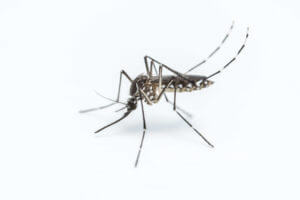In the past, insects were purported to be useful for a variety of different purposes. Of course, past societies had a relatively absurd view of insect life. For example, past societies considered certain insect species to be useful for medical purposes. While some insects may have been medically beneficial for people more than 100 years ago, it is safe to say that most insect-based medical treatments from previous centuries were completely useless, or even harmful.
During the 1740s, medical conditions like ague, chills, fever, and sweating, could be treated by stuffing a spider web into a baked apple before eating it. A Swedish naturalist, Peter Kalm, witnessed the effects of this peculiar remedy first hand while visiting America. After one colonial lady ate the baked apple stuffed with spider silk, her symptoms did not improve, so she ate another one. Growing impatient with the drug’s surprising ineffectiveness, the woman quickly put down a third webbed-apple and quickly passed out into a comatose state. According to Kalm’s account, the woman awoke to a clean bill of health after a three hour slumber.
One century earlier, in Jamestown, Captain John Smith expressed his hatred for mosquitoes and flies in his Generall Historie of Virginia, New England, and the Summer Isles. However, as far as John Smith was concerned, the annoying mosquito and fly insect species were not worthy of the same level of hate that cockroaches clearly deserve. Of course, back in the early 1600s, the word “cockroach” had not yet existed. Smith was referring to what the Spanish had called cucarachas, and he wrote about his displeasure with these bugs in his writing. In reference to a cockroaches’ tendency to route through clothes, Smith wrote: “They eat and defile with their ill-scented dung.” Well, they understood cockroaches pretty well at least.
Have you ever wondered how certain insects got their names?